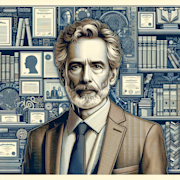Mrs. Dalloway by Virginia Woolf

Introduction
In the world of modernist literature, Virginia Woolf is a towering figure, known for her innovative writing style and exploration of human consciousness. One of her most famous works, “Mrs. Dalloway,” is a novel that has captivated readers since its publication in 1925. In this blog post, we will delve into the world of “Mrs. Dalloway” and explore the themes, characters, and style that make it a timeless classic.
Plot Summary
“Mrs. Dalloway” follows a day in the life of Clarissa Dalloway, an upper-class woman in post-World War I London, as she prepares to host a party that evening. The novel unfolds as Clarissa goes about her day, reflecting on her past and present, and interacting with various characters who bring their own stories and perspectives to the narrative. Interspersed with Clarissa’s story is that of Septimus Warren Smith, a shell-shocked war veteran whose struggles with mental illness provide a stark contrast to Clarissa’s privileged existence.
Themes
Time and Memory
One of the central themes of “Mrs. Dalloway” is the relationship between time and memory. The novel is structured around the passing of time throughout the day, as the characters grapple with the past, present, and future. Woolf’s stream-of-consciousness style allows the reader to experience the characters’ memories and thoughts in real-time, blurring the boundaries between past and present.
Social Class and Privilege
Another key theme in “Mrs. Dalloway” is the exploration of social class and privilege. Clarissa Dalloway moves in elite circles, and her life is governed by societal expectations and norms. Woolf deftly portrays the dynamics of class through Clarissa’s interactions with other characters, highlighting the disparities and inequities that exist in early 20th-century London.
Alienation and Isolation
The characters in “Mrs. Dalloway” grapple with feelings of alienation and isolation, despite their outward appearances of success and social status. Clarissa, Septimus, and other characters struggle to connect with those around them, leading to a sense of loneliness and disconnection. Woolf’s portrayal of these themes reflects the broader existential anxieties of the post-war era.
Style
Virginia Woolf’s writing style in “Mrs. Dalloway” is characterized by its poetic language, experimental structure, and innovative use of stream-of-consciousness. The novel unfolds through the perspectives of multiple characters, with seamless transitions between their thoughts and memories. Woolf’s prose is lyrical and evocative, capturing the inner lives of her characters with depth and nuance.
Conclusion
“Mrs. Dalloway” is a groundbreaking work of literature that continues to resonate with readers today. Virginia Woolf’s exploration of time, memory, social class, and alienation remains as relevant now as it was nearly a century ago. Through its richly drawn characters and innovative narrative style, “Mrs. Dalloway” invites readers to delve into the complexities of human experience and contemplate the enduring questions of identity, connection, and meaning.

Johnathan Evans
Journalist
More From Classics Authority Books

Book
Nicholas Nickleby by Charles Dickens

Book
The Mysterious Island by Jules Verne

Book
The Mayor of Casterbridge by Thomas Hardy

Book
The Castle by Franz Kafka

Book
Sounder by William H. Armstrong

Book
The Outsiders by S.E. Hinton





